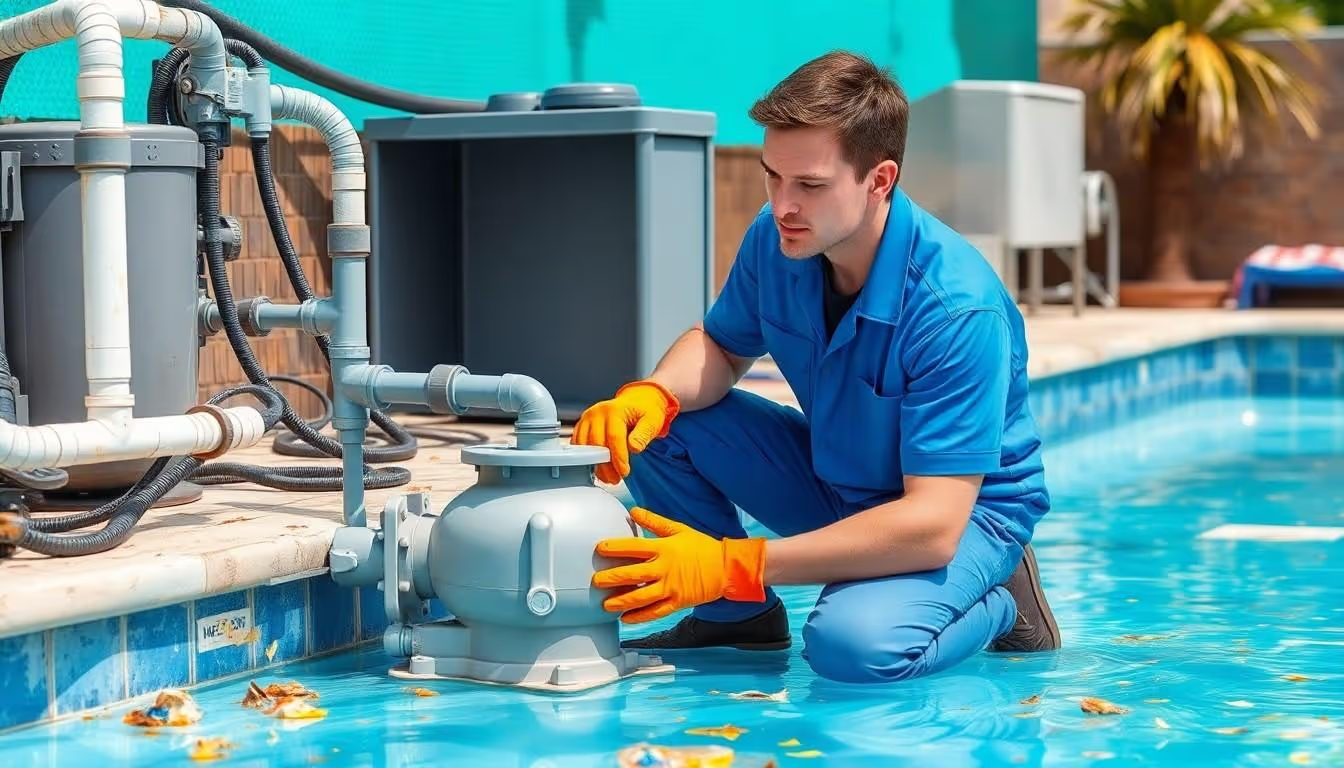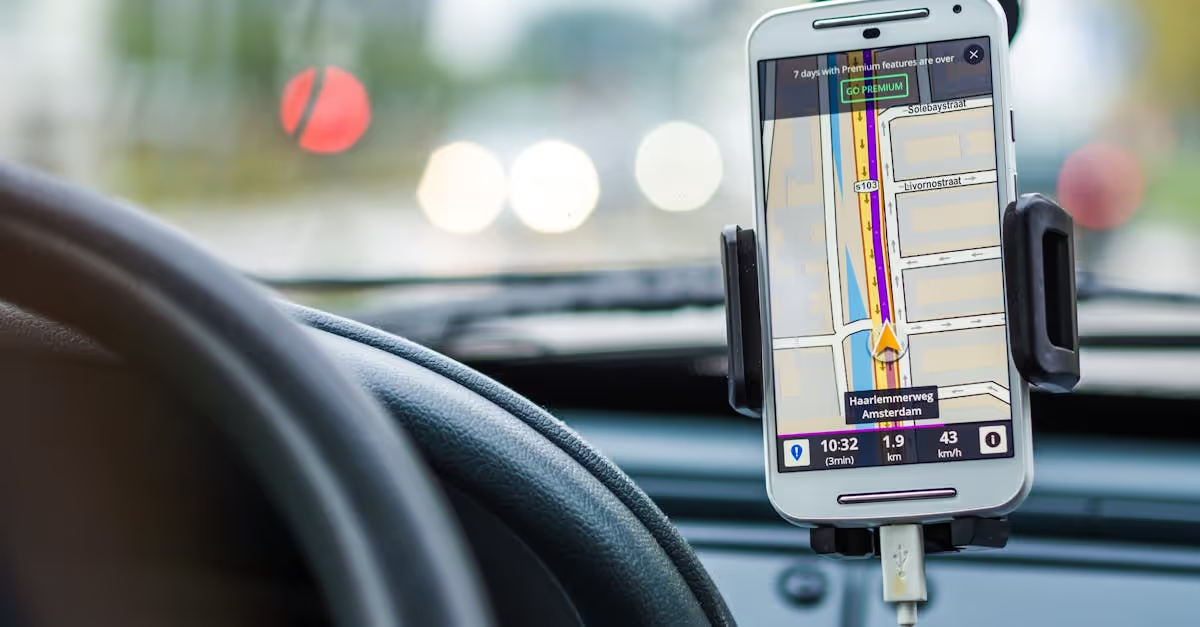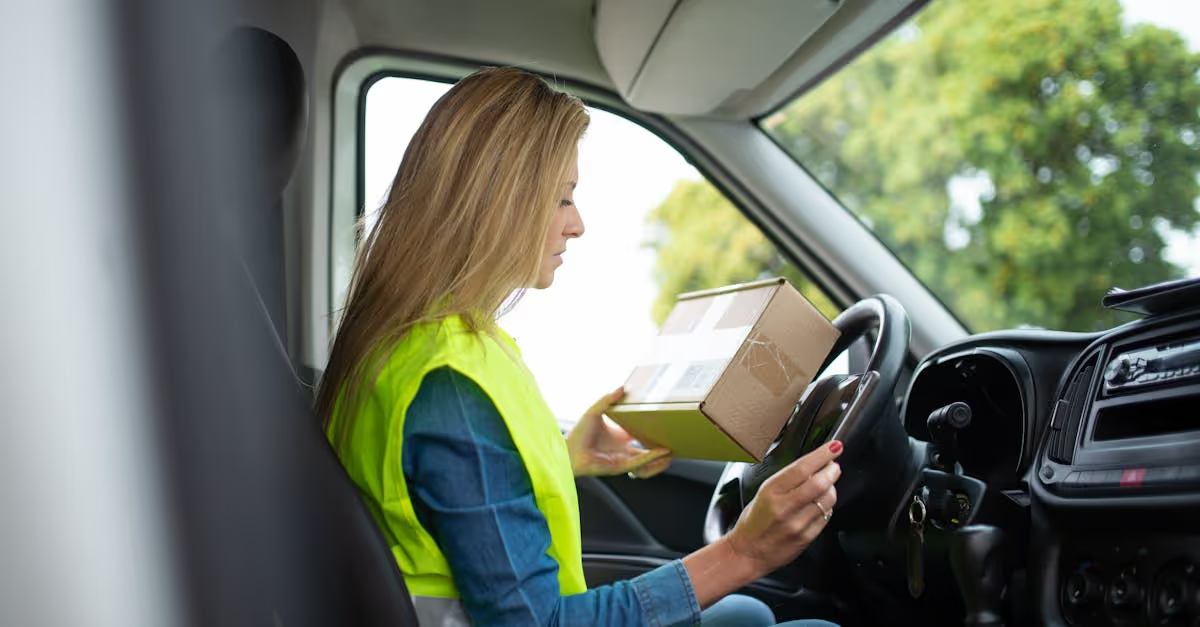Hurricane season can wreak havoc on our pools, leaving them in a state of disarray. It's crucial to take immediate action post-storm to ensure our pools remain safe and functional. Did you know that keeping the pool filled during a hurricane can help anchor it against high winds? This simple step prevents structural damage and avoids the costly mistake of an empty pool floating due to groundwater pressure.
Once the storm has passed, it's time for some strategic cleanup. Removing debris without using vacuums initially is vital, as this helps prevent potential damage to your equipment. Powering down electrical systems until they're thoroughly inspected ensures we avoid circuit issues caused by water exposure.
Engaging professional assistance for inspection can save us from hidden problems like cracks or leaks, which may not be visible right away. With these expert tips, we can efficiently restore our pools' health and safety after a hurricane's impact.
Key Takeaways
- Maintain Pool Water Levels During Storms: Keeping the pool filled during a hurricane can prevent structural damage by anchoring it against high winds and reducing the risk of floating due to groundwater pressure.
- Post-Storm Assessment and Cleanup: After a hurricane, inspect your pool for visible damage like cracks or leaks. Remove debris manually before using equipment to avoid potential damage.
- Engage Professional Help: Hiring professionals for post-storm inspections can help identify hidden issues such as structural weaknesses and assist with insurance claims through thorough documentation.
- Electrical Safety Precautions: Ensure all electrical equipment is dry and check for water damage before reactivating systems to prevent circuit issues or shocks.
- Restore Pool Chemistry and Equipment: Test water levels, adjust chemical balance, and conduct shock treatments post-hurricane. Clean filters and ensure pumps are functioning correctly to restore normal operations.
- Long-term Maintenance Strategies: Implement regular maintenance routines like skimming debris, checking chemical levels, inspecting equipment, and using durable pool covers to protect against future storm impacts.
Assessing Pool Damage Post-Hurricane
After a hurricane hits, one of our top priorities is assessing the pool for any damage. Think about your pool like an old friend who's just been through a rough time—you'd want to give it a thorough check-up, right? We begin by looking for visible signs such as cracks on the surface or broken tiles. Discolored water can indicate contamination, so it's important to note this too.
Checking mechanical elements like pumps and filters is also crucial. If they appear damaged, calling in professionals who specialize in post-storm evaluations might be necessary. They have the expertise to detect less obvious issues that could affect your pool's structural soundness over time.
Speaking of specialists, isn't it great how they always seem to find that tiny crack you missed or a leak that seemed non-existent? It's almost like they've got a sixth sense! Engaging them not only saves us from future headaches but also helps speed up insurance claims if significant damages are found. Documenting everything meticulously aids in this process—because let's face it, dealing with insurance companies requires more documentation than adopting seven puppies!
Once debris is cleared and chemicals balanced, we must check all equipment again. Power restoration gives us the chance to ensure our pumps and filters work correctly. But if there's damage after inspecting these components, contacting a professional immediately becomes imperative.
Have you ever wondered why pools sometimes look like swamps post-hurricane? Well, it's often due to unchecked water chemistry rather than frogs having an epic pool party! Testing water levels first allows us to add proper chemicals where needed.
Finally, while we're talking about tests and checks—remember those seemingly endless math problems in school? This part's similar; once we complete initial inspections ourselves it's wise (and sanity-preserving) to call experts for another look-over—they're better at spotting hidden damage anyway!
Ensuring Safety and Conducting Initial Assessments

After a hurricane, safety is our top priority. Imagine your pool as a giant bowl of soup that's been left out in the rain—it's not exactly appetizing to dive into right away! Before jumping in, let's talk about what steps we can take together.
Avoid Draining the Pool
Our first instinct might be to drain that murky mess, but hold off. High groundwater can turn our pools into pop-up surprises if emptied too soon. We don't want to find our pool halfway up like an oversized cereal bowl!
Protect Yourself
Ever tried cleaning up after a party without gloves? Multiply that by a thousand for post-hurricane debris! Waterproof gloves are essential when removing debris to keep those hands safe from bacteria and other icky stuff floating around.
Check Electrical Equipment
Before flipping any switches, let's channel our inner Sherlock Holmes. All electrical equipment must be dry with no signs of water damage before turning it on again. If something looks suspicious or was running during the storm, calling in a pro's better than getting an unwanted shock.
Why Involve Professionals?
Think of professionals as lifeguards for your pool’s health—they spot trouble where we might see nothing amiss. They provide peace of mind by checking pumps and filters for hidden issues while helping with insurance claims documentation.
Debris Removal and Water Level Management

Dealing with a post-hurricane pool can feel like battling a mini swamp in your backyard. Let's dive into straightforward steps for debris removal and managing water levels.
Clearing Out Debris and Leaves
Imagine waking up to find your pool has transformed into nature's dump site, complete with branches, leaves, and who knows what else. First things first: grab that trusty skimmer or net and start scooping out the floating chaos. It's like fishing but without the reward of dinner.
Next, clean those skimmer baskets and pump strainers before you turn on any equipment. This simple task prevents clogs that would make even a plumber cringe. Once you've tackled the big stuff, it's time for some underwater action—vacuuming! Aim for an efficient cleanup by vacuuming directly to waste when possible so you don't end up clogging your filter with finer particles.
Have you ever wondered if there’s an app for this? While we can't promise automated cleanup yet, staying organized with routine maintenance is key to keeping these hurricane headaches at bay.
Proper Handling of Water Levels
Think of your pool's water level as Goldilocks' porridge: it needs to be just right—not too high nor too low. Heavy rain usually raises this level significantly during storms. Before hurricanes hit, lower it by about two feet if possible; consider it preventive medicine for avoiding potential overflow disasters inside your house.
If everything looks clear after the storm except extra water hanging around like uninvited guests at a party—use either pumps or siphons instead of risking damage from debris-laden systems doing overtime work on drainage duty!
Cleaning and Restoring Pool Equipment

After a hurricane, restoring pool equipment to its former glory is essential. Our focus is on filters, strainers, and electrical systems—integral parts that need careful attention.
Inspecting and Cleaning Filters and Strainers
Filters and strainers are like the lungs of our pool system. They keep everything clean by trapping debris. First off, we grab our tools to examine these components for any signs of wear or damage caused by the storm. If you spot something unusual, it might be time for a replacement.
Next up is cleaning. We remove all accumulated debris from skimmer baskets and pump strainers before turning anything back on. This step prevents clogs that can lead to operational hiccups. Imagine trying to breathe with a cloth over your nose—not fun! Giving these components a thorough rinse ensures smooth operation once they’re running again.
Checking and Securing Electrical Equipment
Electrical equipment needs tender love post-hurricane too—and maybe some elbow grease! Before touching anything electric, we make sure it's dry as a bone; safety first! Water plus electricity equals sparks—and not the happy kind.
We check connections for looseness or corrosion since moisture could have snuck in during the storm's chaos. Tightening screws or replacing corroded parts helps avoid future headaches—or heartaches when things don’t go as planned during your next backyard barbecue!
Lastly, if you're feeling less than confident dealing with wires, call in an expert; there’s no shame in seeking help where needed! It keeps everyone safe while ensuring everything runs smoothly when powering things back up again.
Balancing Pool Chemistry and Treatment

Dealing with pool water post-hurricane can feel like trying to solve a jigsaw puzzle in the dark. But don't worry, we've got the flashlight! Let's dive into chemical adjustments that bring clarity back to your pool.
Chemical Adjustments and Shock Treatments
First things first, grab a reliable test kit. Consider it our detective tool for uncovering what Mother Nature left behind. After testing, you'll likely find skewed levels of chlorine, alkalinity, or pH. Think of these as unruly party guests needing some gentle persuasion to behave.
Adjusting Total Alkalinity sets the stage for other chemicals to do their job effectively. It's like laying down a good carpet before arranging furniture—start here before moving on to pH adjustments.
Rainwater can dilute calcium hardness and stabilizer levels too. If your plaster's feeling parched, add some calcium; nobody wants cracked plaster! A stabilizer helps keep chlorine from running off like it's late for another appointment.
Once balanced chemically, it's time for shock treatment—a rapid infusion of chlorine that leaves bacteria and algae nowhere to hide. Picture it as inviting everyone out of the pool except your best friends: clean water molecules!
Keep tabs on the pH; aim between 7.4 and 7.6 using your trusty test kit often enough until everything looks just right again!
Restarting Pool Filtration and Circulation Systems
Restarting pool systems after a hurricane might seem like a game of whack-a-mole with all the issues popping up. But don't worry, we're here to help you tackle this task one step at a time.
First things first, let's play scavenger hunt! Use a skimmer or pool net to scoop out leaves, branches, and anything else that doesn't belong in your pool. It's like fishing without the fish—just less exciting but equally rewarding when you see clear water again.
Next up is our favorite detective work: inspecting for damages. Check drain covers and the overall structure for any signs of trouble. If murky waters make it hard to see down there, it's best to call in a pro for some underwater sleuthing.
Before flipping switches back on, give each piece of equipment a thorough check. Imagine you're giving your car an oil change—clean and dry everything well. Look out for water damage on electrical parts because we want sparks only on Independence Day fireworks, not in our pools!
Keeping the water moving is key to avoiding swamp-like conditions. Aim for a turnover rate between 8-10 hours; this means circulating all the water through filters within that timeframe. Think of it as running laps around your backyard oasis until it's sparkling clean again.
Consider using enzymatic clarifiers—they're like little Pac-Men gobbling up organic debris invisibly floating around (minus the ghosts). Follow dosing instructions based on pool size so they can do their job effectively.
Here's where vigilance pays off: regularly check skimmer baskets and pressure gauges during this process. When pressure nears 30 psi or higher due to debris buildup from earlier chaos caused by storms gone wild outside—pause operations briefly while cleaning filters thoroughly before resuming action once more!
So ask yourself: Have I checked everything twice? Are there any surprises lurking beneath those waves still waiting patiently under wraps just itching ready-to-jump into action unexpectedly?
Long-Term Maintenance and Prevention Tips
Routine maintenance keeps our pools in top shape long after a hurricane has passed. Scheduling regular checkups with technicians helps spot minor issues before they become expensive repairs, saving us time and money in the long run. Regular inspections maintain both aesthetics and functionality.
Investing in durable pool covers offers year-round protection against debris, reducing daily upkeep. These covers act like shields during storms, preventing leaves and branches from turning our pools into giant leaf soup. Who wouldn’t want less cleanup hassle?
Skimming the pool's surface regularly is crucial for keeping it clean. Leaves, bugs, and other debris can sink to the bottom if left too long, causing contamination that makes pool parties less fun—unless you're into swamp-themed gatherings! A simple skimmer or net does wonders.
When vacuuming the pool floor, use either a manual vacuum or an automatic cleaner based on your pool type. This not only removes stubborn debris but also maintains water clarity that rivals any five-star resort.
Monitoring chemical levels is another key step we shouldn't skip—think of it as giving our pool its vitamins! Testing for pH, chlorine, and alkalinity ensures swimmer safety while balancing water chemistry.
Cleaning pool tiles and walls prevents calcium deposits from making them look like ancient ruins. A good scrub with a tile brush or pumice stone keeps surfaces sparkling bright enough to make sunglasses necessary!
Inspecting equipment periodically avoids surprise breakdowns that could lead to costly repairs later on. Address pump or filter issues promptly for smooth operation all season long.
Incorporating small habits goes a long way toward stress-free lounging by the poolside—and who doesn't love more relaxation? Consistent care now means fewer headaches later on.
For those using technology to manage service appointments efficiently: technician scheduling tools allow us homeowners seamless interactions without lifting a finger (or even putting down our margaritas). Are there other ways you simplify post-hurricane maintenance?
Conclusion
Restoring a pool post-hurricane involves a strategic approach to ensure safety and functionality. Our focus should be on immediate protective actions, thorough inspections, and professional assessments to identify hidden damages. By maintaining vigilance in cleaning debris and balancing water chemistry, we can prevent long-term issues. It's crucial that we document every step meticulously for insurance purposes and peace of mind.
Incorporating long-term maintenance habits not only prepares us for future storms but also enhances our enjoyment of the pool year-round. With smart technology aiding service management, maintaining our pool becomes a seamless part of our routine. Let's commit to these practices to safeguard our investment and enjoy stress-free relaxation by the poolside after any storm passes through.
Frequently Asked Questions
Why should I keep my pool filled during a hurricane?
Keeping your pool filled during a hurricane prevents structural damage by counteracting the pressure from rising groundwater. An empty or partially filled pool is at risk of "floating" or popping out of the ground due to this pressure. The water also adds weight, keeping the structure stable and reducing the chances of cracking or other damage.
What should be my first step in cleaning up after a hurricane?
The initial step should be removing debris from the pool using a net or skimmer, avoiding vacuum use to protect equipment. Ensure all electrical systems are powered down before inspection to prevent any hazards.
How can I check for hidden damages in my pool post-hurricane?
After visible cleanup, inspect for signs like cracks or broken tiles and note any water discoloration indicating contamination. It's advisable to seek professional help for thorough evaluations, especially concerning mechanical elements like pumps and filters.
Is it safe to drain my pool immediately after a storm?
Draining your pool right after a storm isn't recommended due to high groundwater levels which can cause the structure to float. Instead, manage water levels carefully while conducting necessary inspections and repairs.
What steps are involved in restoring pool chemistry after a hurricane?
Begin by balancing chemical levels with specific treatments such as shock treatments to restore chlorine balance. Test water regularly and ensure filtration systems function properly for optimal circulation and turnover rate.
How do I maintain long-term health of my swimming pool post-hurricane?
Regular maintenance is key: invest in durable covers for protection against future storms, skim frequently, monitor chemicals diligently, clean tiles regularly, and inspect equipment periodically. Implementing these habits aids in early problem detection and prevention.








